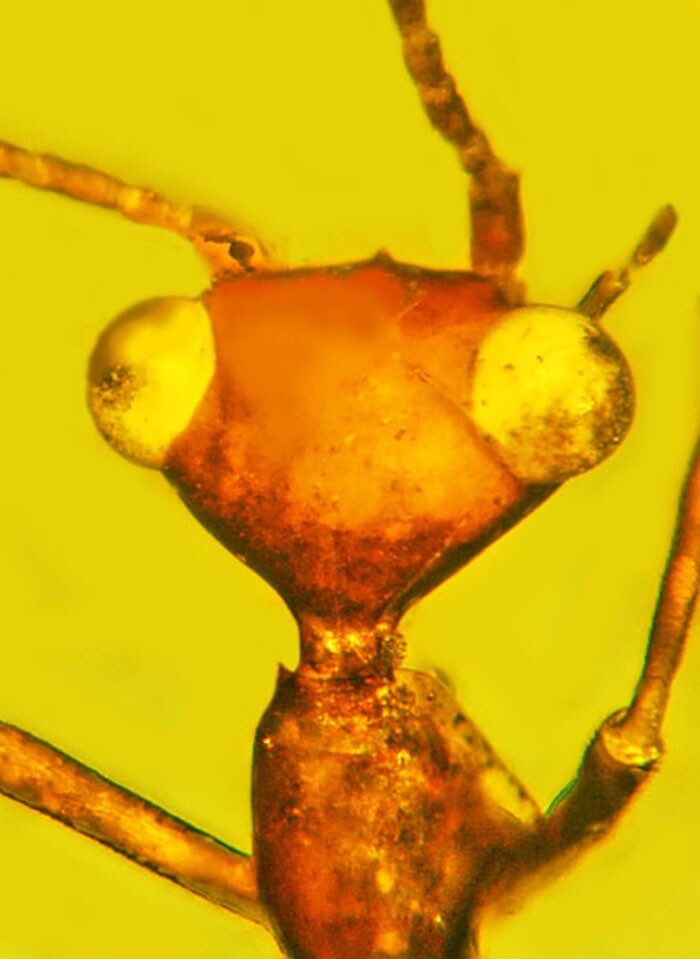Around one million insects have been discovered and described by scientists, with every last one slotting into one of 31 categories, known in entomology circles as orders. But researchers at Oregon State University have been forced to revisit the playbook, after the discovery of an alien-like insect preserved in amber left them with no choice but to take an incredibly rare step and create order number 32, which it enjoys all to itself.
The bizarre creature was discovered in the forest of what is now Myanmar. Thought to be 100 million years old, the wingless female insect features a triangular ET-like head with bulging eyes. The vertex of the triangle sits at the base of its head, as opposed to all other triangular-headed insects in which the hypotenuse connects to the neck. The researchers believe this would have allowed the species to see behind itself.
"This insect has a number of features that just don't match those of any other insect species that I know," said George Poinar, Jr., an emeritus professor of entomology at Oregon State University. "I had never really seen anything like it. It appears to be unique in the insect world, and after considerable discussion we decided it had to take its place in a new order."

Among the other features of interest are glands on the neck that secreted some sort of deposit, most likely a chemical to deter predators, and long slender legs attached to a narrow and flat body. The creature most likely lived in amongst the bark of trees and survived on mites, worms and fungi.
The scientists actually found two examples of the now-extinct species, and have placed them in a newly created order called Aethiocarenodea. The species itself has been dubbed Aethiocarenus burmanicus, in a tip of the hat to the region previously known as Burma.
"The strangest thing about this insect is that the head looked so much like the way aliens are often portrayed," Poinar said. "With its long neck, big eyes and strange oblong head, I thought it resembled ET. I even made a Halloween mask that resembled the head of this insect. But when I wore the mask when trick-or-treaters came by, it scared the little kids so much I took it off."
You can hear from a mask-free Poinar in the video below. A paper describing the discovery was published in the journal Cretaceous Research.
Source: Oregon State University






